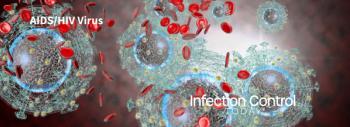
NIH Researchers Identify Red Blood Cell Traits Associated With Malaria Risk in Children
Researchers at the National Institute of Allergy and Infectious Diseases, part of the National Institutes of Health, have determined that certain red blood cell traits in children can increase or decrease their risk for malaria. The findings could help identify future targets for new malaria drugs and vaccines.
From 2008 to 2011, NIAID scientists and their collaborators followed 1,543 children ranging from 6 months to 17 years old in Mali, a West African country with a high incidence of childhood malaria. Throughout the study period, the children experienced a total of 4,091 episodes of malaria. Investigators observed that several red blood cell variants--inherited disorders associated with abnormal forms or decreased production of the oxygen-carrying blood protein hemoglobin--were associated with malaria risk. Specifically, the sickle-cell trait HbAS appeared to correlate with protection from malaria in early childhood and reduced the density of malaria parasites in children who did become ill. HbAS means an individual carries only one defective gene that causes the production of abnormal hemoglobin. In sickle-cell disease, an individual has two of these genes.
Researchers also found that a genetic condition known as homozygous X-linked G6PD deficiency correlated with a reduced risk of malaria in girls only. Meanwhile, HbC-trait, in which the body makes an abnormal hemoglobin called hemoglobin C, appeared to increase malaria risk in children. Scientists hope this study will lead to further research into the molecular mechanisms of the malaria-protective effects of red blood cell variants.
Reference: TM Lopera-Mesa et al. Effect of red blood cell variants on childhood malaria in Mali: a prospective cohort study. Lancet Haematology. DOI: 10.1016/S2352-3026(15)00043-5
Source: NIH/National Institute of Allergy and Infectious Diseases
Newsletter
Stay prepared and protected with Infection Control Today's newsletter, delivering essential updates, best practices, and expert insights for infection preventionists.






